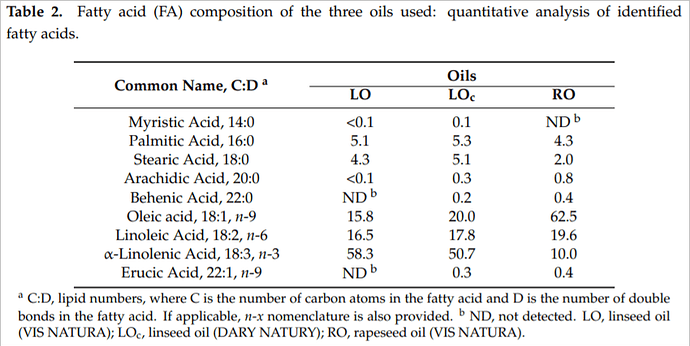Respected all,
May i know how to analyse Linseed oil (Raw material) for its assay, density, acid value, iodine value, saponification value, water value as per B.P.
Here is a monograph (Technical specifications) of Linseed oil as per European Pharmacopoeia (6.0)
Please refer European pharmacopoeia for Method of analysis which is indicated in the brackets for each test as given below (such as 2.5.1, 2.5.4, 2.5.5, 2.5.6, 2.5.7 etc.),
LINSEED OIL, VIRGIN (Lini oleum virginale)
DEFINITION
Virgin oil obtained by cold expression from ripe seeds of
Linum usitatissimum L. A suitable antioxidant may be
added.
CHARACTERS
Appearance: clear, yellow or brownish-yellow liquid, on
exposure to air turning dark and gradually thickening.
When cooled, it becomes a soft mass at about −20 °C.
Solubility: very slightly soluble in alcohol, miscible with
light petroleum.
Relative density: about 0.931.
Refractive index: about 1.480.
IDENTIFICATION
First identification: B, C.
Second identification: A, B.
A. Identification of fatty oils by thin-layer chromatography
(2.3.2). The chromatogram obtained is similar to the type
chromatogram for linseed oil.
B. It complies with the test for iodine value (see Tests).
C. It complies with the test for composition of fatty acids
(see Tests).
TESTS
Acid value (2.5.1) : maximum 4.5.
Iodine value (2.5.4): 160 to 200.
Peroxide value (2.5.5): maximum 15.0.
Saponification value (2.5.6): 188 to 195. Carry out the
saponification for 1 h.
Unsaponifiable matter (2.5.7): maximum 1.5 per cent, determined on 5.0 g.
Composition of fatty acids. Gas chromatography (2.4.22, Method C). Use the calibration mixture in Table 2.4.22.-3.
Composition of the fatty-acid fraction of the oil:
— fatty acids with a chain length less than C16 : maximum 1.0 per cent,
— palmitic acid: 3.0 per cent to 8.0 per cent,
— palmitoleic acid (equivalent chain length on polyethyleneglycol adipate 16.3): maximum 1.0 %
— stearic acid: 2.0 per cent to 8.0 per cent,
— oleic acid (equivalent chain length on polyethyleneglycol
adipate 18.3): 11.0 per cent to 35.0 per cent,
— linoleic acid (equivalent chain length on polyethyleneglycol adipate 18.9): 11.0 per cent to
24.0 per cent,
— linolenic acid (equivalent chain length on polyethyleneglycol adipate 19.7) : 35.0 per cent to
65.0 per cent,
— arachidic acid: maximum 1.0 per cent.
Cadmium (2.4.27) : maximum 0.5 ppm.
Water (2.5.32): maximum 0.1 per cent, determined on 5.00 g.
STORAGE
In an airtight container, protected from light.
Respected @sunilrbudhkar sir,
Could you provide me with the Validated method or any method for analysis of linseed oil for its assay using dry lab / wet lab analysis.
Please note the following,
Generally for oils which are natural products have complex composition (a combination of different fatty acids). Therefore, its assay / purity is not determined. Instead, following chemical parameters which are specific to the oils are estimated quantitatively, such as
- Saponification value
- Iodine value
- Peroxide value
- Ester value
- Unsaponifiable matter
- RMPK values (usually used for butter or ghee)- Reichert Meisel Polenske Kirschner values
- Acid value (index of Rancidity)
By determining above chemical values, one can estimate purity levels or grades of different oils or we can find out if those oils are adulterated with other cheaper oils.
For your information please refer following tables to understand composition of Linseed oils of different grades,


